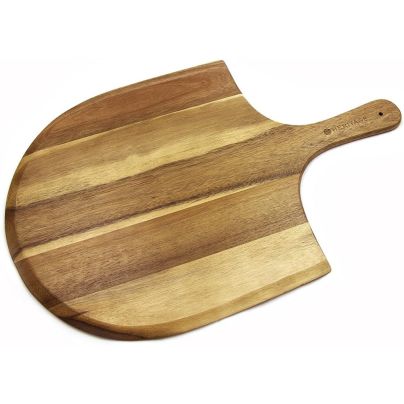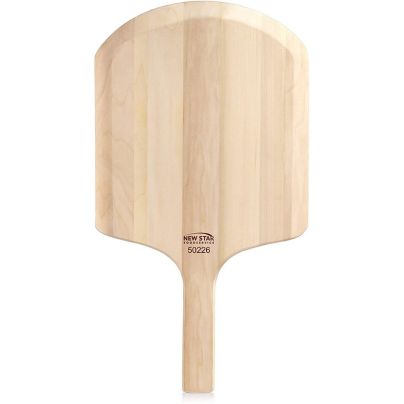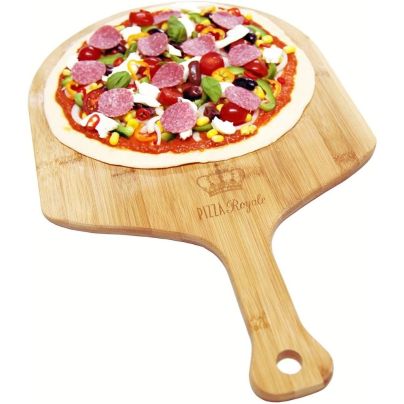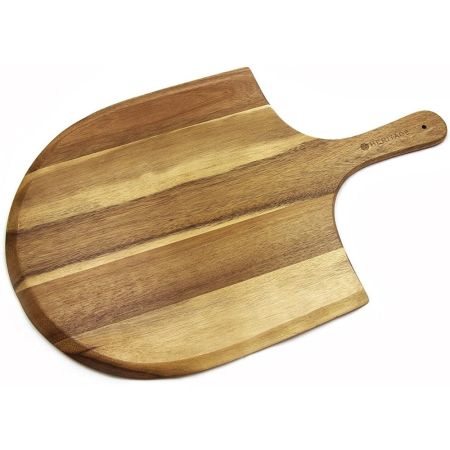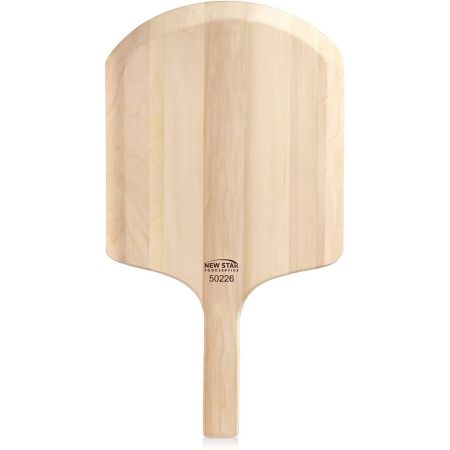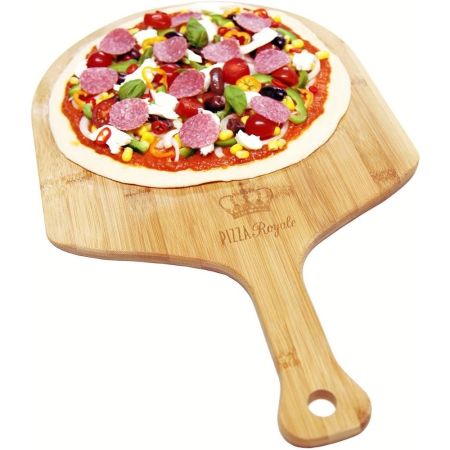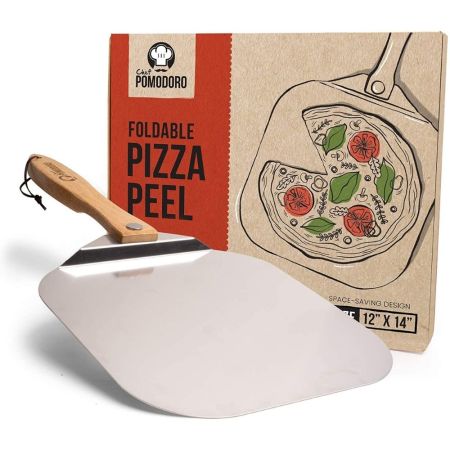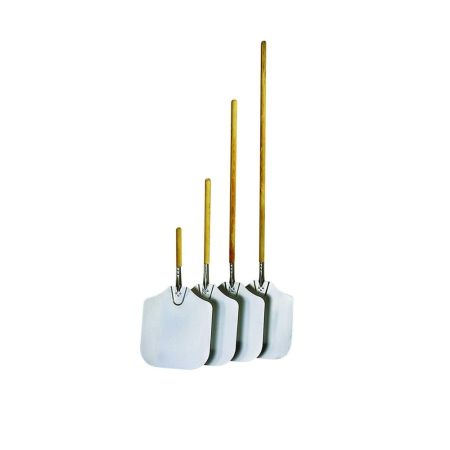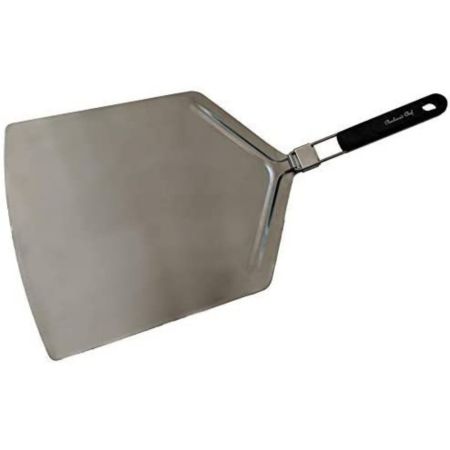We may earn revenue from the products available on this page and participate in affiliate programs. Learn More ›
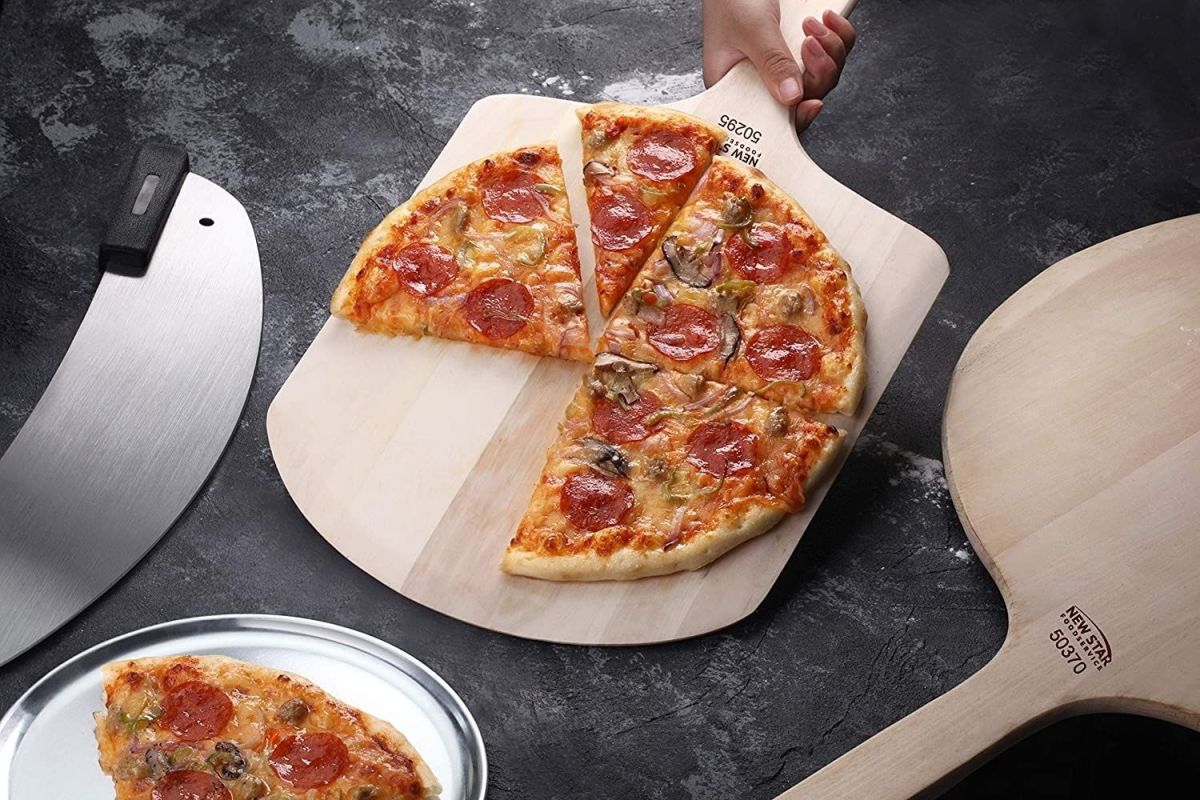
The deliciousness of pizza only gets better when paired with the best pizza peel. That’s because managing the pizza is so much easier with a pizza peel, which looks like a metal or wooden cutting board with a long handle. Its beveled edge lets you easily slide the pizza from the peel to the oven rack and back again. As a result, a pizza peel allows you to cook the pizza directly on the rack, stone, wood, or brick of the oven, creating the perfectly baked pie.
If you’re ready to learn more about this handy tool, this guide explores important features to consider as you shop for the best pizza peel for your next pizza party. Review the following selections for some of the top options on the market.
- BEST OVERALL: Heritage Acacia Wood Pizza Peel
- BEST BANG FOR THE BUCK: New Star Foodservice Restaurant-Grade Wooden
- BEST WOODEN/BAMBOO: Pizza Royale Ethically Sourced Premium Natural Bamboo
- BEST METAL: Chef Pomodoro Aluminum Metal Pizza Peel
- BEST FOR OUTDOOR OVENS: American Metalcraft 14″ x 16″ Large Blade Peel
- BEST FOR FAMILIES: Checkered Chef Pizza Peel Extra Large
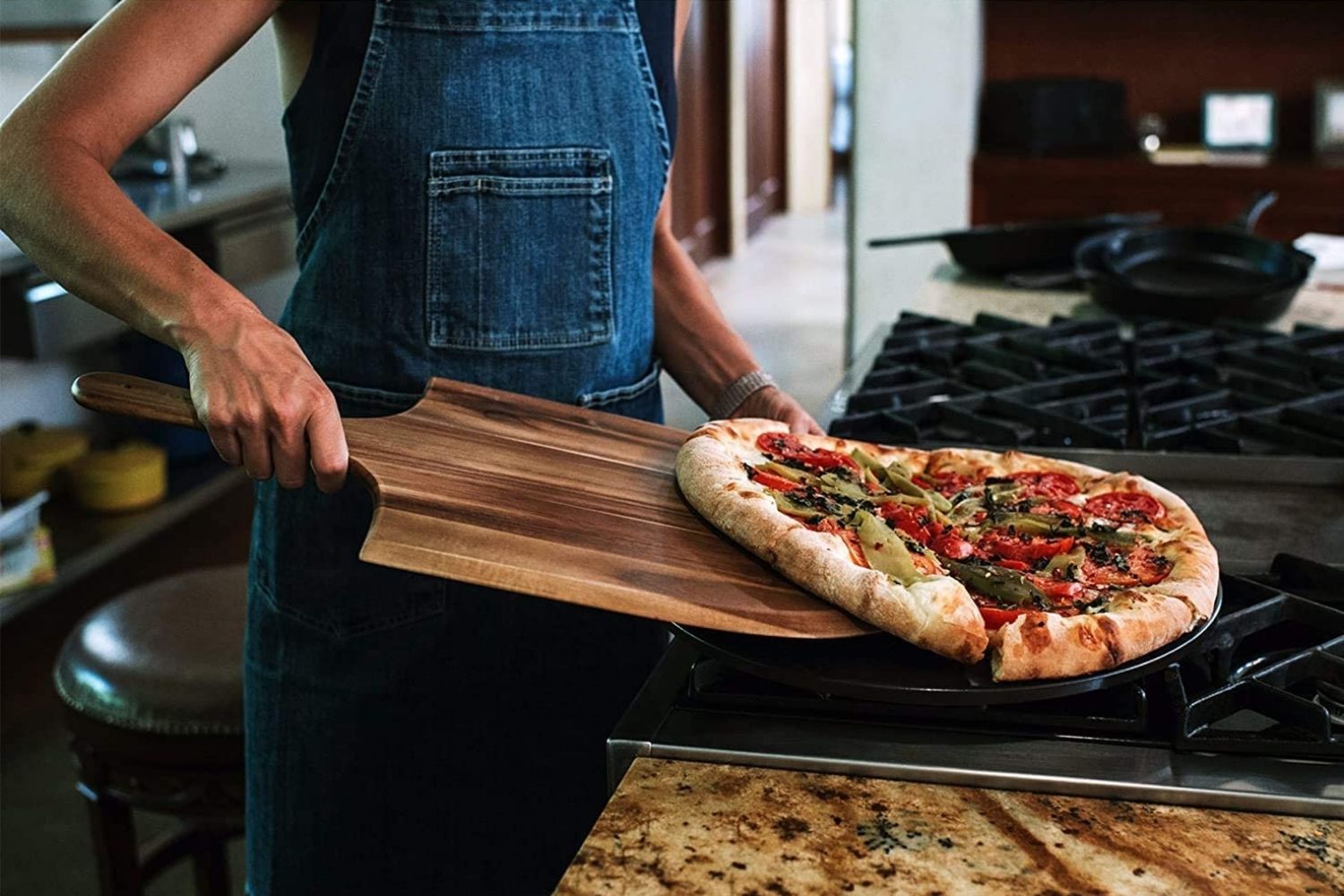
What to Consider When Choosing the Best Pizza Peel
Pizza peels come in different shapes, sizes, materials, and handle lengths. Other considerations include the type of oven in which it will be used, the number of diners, typical venue—inside or outside—its shape, and ease of cleaning.
Material
Pizza peels are made using three primary materials, each with pros and cons, including wood, composite, or metal.
Wood
Wood is a traditional pizza peel material, and its natural texture helps create airflow under the pizza. Better airflow makes it easier for the pizza to slide off the peel and into the oven. Wood also can act as a cutting board once the pizza is out of the oven.
However, wood requires regular sealing with oil to maintain and protect the surface. Wooden peels are also thicker and heavier than metal. If not properly maintained, wood can crack if it receives too much heat or moisture.
Composite
Composite pizza peels contain pieces of wood mixed with resin. Resin adds strength, so these peels are often thinner than wood products. They have a textured surface that promotes airflow under the pizza, helping it to slide into the oven. However, composite pizza peels are quite heavy, limiting the handle length and the type and size of oven.
Metal
Aluminum and stainless steel are the most common metals used to make pizza peels. Metal peels are more durable than wood, requiring very little maintenance other than hand-washing. Aluminum is also lightweight, so these peels are easier to maneuver than wood or composite peels. However, pizza crust can stick to the metal, making it difficult to slide the uncooked pizza off the peel. Metal peels with a perforated surface reduce the suction, allowing the pizza to slide more easily.
Shape
Pizza peels are either round, square, or rectangular. Some have a square shape with a round front. Square peels are the traditional shape, offering the most and best use of the space. However, round peels allow the pizza to be picked up from the side, not just the front. Rectangular peels work for two pizzas or a large rectangular pizza.
Perforation
Perforations in the surface of a pizza peel allow air to circulate underneath the pizza, reducing friction so the pizza can slide off. These perforations also permit flour or cornmeal to drain from the bottom of the crust. A perforated surface decreases the weight of the peel, increasing maneuverability.
Capacity/Size
A pizza peel must hold an entire pizza, and larger peels naturally hold larger pizzas. Choose a peel size based on the size of the oven and the number of people eating the pizza. Square and rectangular pizza peels offer more space than round peels.
A 12-inch peel provides enough space to cook a two- to four-person pizza. A 14-inch peel holds a pizza large enough for four to six people, while a 16-inch peel comfortably fits a pizza large enough to feed six to eight people. However, appetites may exceed the average serving size.
Handle Length
For most home chefs, a short-handled pizza peel works well in a standard home oven. The peel needs to reach far enough to slide in and remove the pizza. Long handles come into play in large ovens, which, in a home, usually means an outdoor oven.
Ease of Cleaning
Metal withstands regular cleaning better than wood, and it doesn’t have to be oiled. In general, pizza peels shouldn’t go in the dishwasher, though some metal peels can separate from the handle for machine washing. However, dishwashers are too hot and wet for pizza peels and could reduce their life span.
Our Top Picks
These pizza peels are made of quality materials, available in various shapes, and boast capacities to fit different oven configurations. With one of these selections, the best pizza peel can turn a kitchen into a pizzeria.
Best Overall
Heritage Acacia Wood Pizza Peel
See ItThis Heritage Acacia Wood Pizza Peel features natural two-toned wood that looks authentic to the Italian countryside. The durable pizza peel resists moisture and heat, though it needs maintenance, including a light oiling.
A rounded front with a tapered edge slides the peel under the pizza for easy removal from the counter and the oven. The handle offers solid control and a secure grip. This pizza peel measures 22.5 by 14.5 inches with a 1-inch thickness.
Best Bang for the Buck
New Star Foodservice Restaurant-Grade Wooden
See ItThe New Star Foodservice Restaurant-Grade Wooden Pizza Peel is made of affordable but durable birch. This .5-inch-thick pizza peel features a round shape with a beveled edge to help it slide under the pizza. The smooth texture helps prevent cracking and wood oil from seeping into the pizza. The handle is available in three lengths for ovens of different depths.
Choose from among 12 sizes. The smallest peel measures 12 by 14 by 22 inches, while the largest is a massive 20 by 20 by 42 inches.
Best Wooden/Bamboo
Pizza Royale Ethically Sourced Premium Natural Bamboo
See ItThe Pizza Royale Ethically Sourced Premium Natural Bamboo Pizza Peel balances stability with weight. The ethically sourced bamboo is .75-inch thick yet weighs under 2 pounds. It’s available in two sizes: 19.6 by 12 inches and 23.5 by 15 inches.
A beveled edge helps to slide the peel underneath the pizza without destroying the crust, assisted by the contoured handle. Regular washing by hand and an occasional oiling help this bamboo peel resist splitting, warping, or splinters for years to come.
Best Metal
Chef Pomodoro Aluminum Metal Pizza Peel
See ItThe Chef Pomodoro Aluminum Metal Pizza Peel features a thin surface made of food-grade aluminum. Aluminum makes the peel lightweight but strong. It measures 12 by 14 inches with a 10-inch foldable handle.
The all-natural birchwood handle folds out and locks in place. To store the peel, fold the handle back over the surface to save space. Since dough can stick to an aluminum surface, sprinkle flour or cornmeal on the peel to help the dough slide off easily.
Best for Outdoor Ovens
American Metalcraft 14u0022 x 16u0022 Large Blade Peel
See ItThe American Metalcraft Large Blade Peel features a 40-inch handle that provides enough length to easily double-layer pizzas in a large outdoor oven without risking burned fingers. The wooden handle won’t conduct heat.
Three rivets attach the high-quality aluminum surface to the handle to provide durability and strength along with a secure grip. Dust the surface with flour or cornmeal to prevent the dough from sticking.
Best for Families
Checkered Chef Pizza Peel Extra Large
See ItThe Checkered Chef Pizza Peel features a wide 16-inch surface to fit larger pizzas. A comfortable rubber handle helps maintain a secure grip and resists heat. The handle can fold over the peel’s surface for easier storage.
Unlike many pizza peels, the lightweight stainless steel surface is dishwasher safe. Be sure to remove the handle before washing.
FAQs About Pizza Peels
The best pizza peel makes it easier to cook pizza. However, it might take some time to master the art of pizza making. Below are answers to a few of the most frequently asked questions about pizza peels to help you get started.
Q. How thick should a pizza peel be?
Metal pizza peels are typically 1 to 3 millimeters—or about 3/64 to 1/8 inches—thick. Wood peels are thicker, usually between 1/2 and 3/4 inches.
Q. What is the best wood for a pizza peel?
Hardy woods like mahogany, acacia, and cherry are all optimal woods for a pizza peel.
Q. Why does my pizza stick to the peel?
Smooth surfaces create suction between the moist dough and the peel. Airflow between the pizza and the peel prevents this type of sticking. Rougher and perforated surfaces help create this type of airflow. You can also apply flour or cornmeal to the surface of a pizza peel to reduce sticking.
